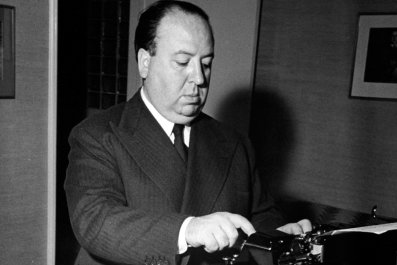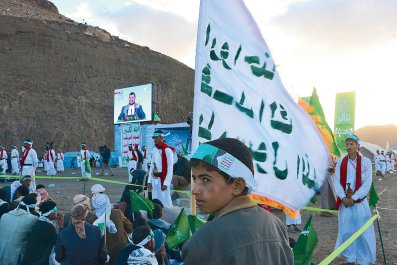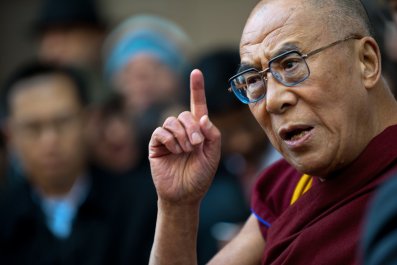On 16 January 1991, Colonel Steven Kleinman, a senior intelligence officer in the U.S. Air Force, flew to Saudi Arabia to interrogate an Iraqi combat engineer captured just before the launch of Operation Desert Storm. Kleinman's task was to find out the location of land mines surrounding a U.S. Army base. Hours later, he had a detailed map of the hidden mines.
"I don't know now – nor did I then – what methods, strategies, or ploys ultimately proved successful in obtaining the Iraqi officer's cooperation," says Kleinman. "I was successful, but that was, at best, only a matter of pure luck. What if I hadn't been lucky that day? Answer: hundreds of dead soldiers."
Kleinman, who became director of the Air Force Combat Interrogation Course the following year, had always rejected the use of psychological or physical coercion in his interrogations. However, he also recognised that his self-taught strategies of seeking cooperation and trust from detainees were fallible, and this particularly high-risk interrogation proved a turning point. When he returned from Iraq, he resolved to help develop evidence-based interrogation techniques to replace traditional methods. "I realised that too much was at stake to be muddling through yet another war in this fashion."
Public debate over the United States's use of torture was recently stoked by the Senate Intelligence Committee's 6,000-page report on "enhanced interrogation techniques" used by the CIA in the years following the 9/11 attacks. Senator Dianne Feinstein, who commissioned the report, responded to its criticism on Twitter with the hashtag #ReadTheReport. Not many people have done so, partly because of its length and disturbing content, partly because most people already have entrenched political or moral convictions regarding the justification of torture.
Many of the arguments employed by critics of torture are founded in human rights. Kleinman represents a military contingent whose objection to torture is professional – they believe it is ineffective and have been collaborating with psychologists to prove this in clinical trials.
For the past five years, the High-Value Detainee Interrogation Group (HIG), run by the FBI in cooperation with the CIA and Department of Defence, has been at the forefront of developing techniques that rely not on physical or psychological pressure but on rapport-building and empathy. This model, commonly known as the "soft" approach and broadly based on incentive rather than intimidation, has been used in countries like Norway and the UK for some time in the fields of law enforcement and intelligence gathering.
On 30 December, in the wake of the "torture report" media frenzy, Senator Feinstein announced she would soon be proposing a bill of legislation to reform interrogation practices in the United States. Coinciding with the recent publication of Guantanamo inmate Mohamedou Ould Slahi's harrowing memoir, the bill is timely. Still locked in his cell, Slahi has reignited the debate on America's detention of people from whom years of traditional interrogation has elicited little or zero information.
One of the instigators of the HIG project is Mark Fallon, former chief of counter intelligence operations for Europe and the Middle East in the Naval Criminal Investigative Service (NCIS). He has always believed that torture does not work, and that its portrayal in popular culture is dangerously misleading. "The 'Hollywood version' of interrogation is that you're looking for a confession, but you're not – you're looking for information. The Bourne or Bond character can resist torture himself, then tortures the 'bad guy' and gets to the ticking bomb just in time while we finish our popcorn and feel good about ourselves. That character is a fiction."
One of the main criticisms of torture is that vital information is often missed during interrogation because the interrogator is focused on obtaining a particular "confession". This pre-conceived fixation can blind the interrogator to other leads, and compromise his or her judgment. Fallon says the public's idea of torture as a necessary evil must change: "We think because we torture someone and get a confession that torture works. But that confession might be false – which is much more dangerous than no confession. Torture has made us less safe."

In 2003, then U.S. Secretary of State Colin Powell told the United Nations he had evidence of links between al-Qaida and Saddam Hussein. This information had come from Ibn al-Shaykh al-Libi, a suspected member of al-Qaida whose "evidence" was obtained under torture and later found to be false. According to the recent Senate Intelligence Committee report, al-Libi later said he made the statement after being kept in a tiny, metal box for 17 hours and punched repeatedly, because he thought it was what his interrogators wanted to hear. The report also rebuts the claims of top CIA officials that information obtained under torture from alleged 9/11 mastermind Khalid Sheikh Mohammed led to the capture and killing of Osama bin Laden in 2011. Back in the U.S., around 30% of the more than 290 wrongful convictions overturned by DNA evidence have been found to involve some form of false confession.
In 2002, Fallon became one of the instigators of the HIG project when he realised – like Kleinman – that his professional objections to the coercive interrogation methods he had seen in Guantanamo Bay were not founded in any concrete research. He collaborated with Dr Robert Fein, a national security and forensic psychologist, who chaired the Intelligence Science Board's Study on Educing Information from 2004 to 2009. The study was an effort to examine what was known scientifically and systematically about interrogation, and while its first report was published during George W Bush's time in office, it was not until 2009 that the HIG became possible, when Barack Obama signed an executive order to end torture and created a government task force to refine interrogation methods.
The psychologist leading the HIG's research team, Professor Christian Meissner of Iowa State University, says the interrogation techniques now being developed are in line with his own personal and professional ethics, but are also empirically proven to get the best results. Alongside clinical research on volunteers, his team works with interrogators in police training centres. According to Meissner, initially sceptical old-school detectives "began to see the merits of the science-based methods; they started to be our advocates". One major American metropolitan police department is one such convert.
Critics of the HIG-style interrogation claim that it is time-consuming and makes impossible demands of the interrogator. Meissner concedes that the process of building trust between interrogator and detainee is lengthy, and that an effective "soft" interrogator must be talented, combining high emotional intelligence with language skills and cultural knowledge to minimise barriers. "A great interrogator is like an actor," he says. HIG proponents are adamant that fewer, better interrogators are crucial to transforming the traditional world of interrogation, where "anyone can punch a guy", as one off-record source drily put it.
In a traditionally male domain, Kleinman notes that women often make the best interrogators. "The female interrogators I worked with were exceptional. They weren't so ego-driven, they didn't always have to be right, they had a great ability to empathise – there is no more vital quality than to be able to empathise. They also had the advantage of surprise, especially in the Middle East where [detainees] don't expect to speak to a woman."
Some critics of the HIG, such as Jeffrey Addicott, the Director of the Center for Terrorism Law at St Mary's University School of Law, Texas, point to its operational limitations. "The HIG can only deal with the 'good guy' approach. This approach has merits but all involved realise that it is time consuming. As such, in the case of a 'ticking time bomb' detainee, this approach is not going to work." Defenders, however, argue that the "ticking time bomb" is in fact a highly improbable scenario, and that it is counterproductive to design an interrogation system around it. Fallon is particularly dismissive: "Look at how long the CIA took keeping detainees in isolation for days and even weeks without ever interrogating them. So much for timely interrogation."
One of the perception problems of the HIG is that its research is muddied by a political agenda, because the board members include representatives from human rights organisations, as well as government. Meissner says he has been entirely free in the direction of his research, and this is confirmed by Raha Wala, a senior counsel at Human Rights First, which sits on the HIG board: "We have no role in commenting on research proposals. Our role is to amplify the message that rapport-based interrogation methods are not only the most humane but the most effective way to get intelligence."
The HIG, while unique in the ambition and breadth of its work, is now arriving at techniques long used in countries like the UK. Ray Bull, a professor of criminal investigation and forensic psychology at the University of Derby, explains that the British police and judiciary have been keen to improve interrogation techniques ever since the torture and forced confessions of IRA suspects in 1970s Northern Ireland came to light. He believes that the horror of torture happening to "one's own" meant reform was a more pressing concern in Britain than in the U.S., where "enhanced interrogation techniques" play out far away from the public's imagination.
British reform included a law introduced in 1986 requiring all police interviews to be recorded. These tapes were then analysed and, in 1992, the Association of Chief Police Officers asked 12 senior detectives to come up with an improved model of interrogation. Bull was one of the scientists who advised them on what became known as the PEACE model (Prepare, Engage, Account, Clarify and Evaluation), which was founded on getting suspects "to choose to tell the truth". This model was tested in 2012 by Bull and Dr David Walsh, who listened to over 100 interviews of varied style and found a strong correlation between the supply of accurate information and use of the PEACE method. Bull suspects that the higher rate of false confession in the U.S. might be due to the fact that many states do not call for mandatory interview recording, making it easier for police to employ bullying tactics and more difficult for lawyers to argue their clients' confessions were coerced.
The embracing of soft interrogation techniques in the U.S. could be an important cue for global political change. Meissner defines the key strength of empathy-based interrogation as: "Seeing 'the subject' as an individual and finding out what motivates him . . . If we treat people like human beings rather than 'subjects' we elicit better results." Those who extend this theory to politics believe there should be a similar approach to both foreign and domestic policy, an attempt to relate to the similarities and common interests between citizens and states rather than treating them as "other". In that light, Senator Feinstein and her bill become ever more significant.































